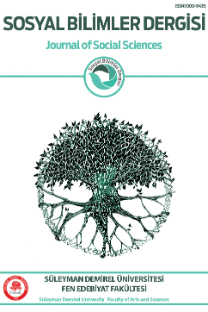Regional Cooperation In Western Balkans : A View From Inside The European Union. The Premises And Obstacles
-
Regional Cooperation In Western Balkans : A View From Inside The European Union. The Premises And Obstacles
___
- Belloni, Roberto, ‘European Integration and the Western Balkans: Lessons, Prospects and Obstacles’, Journal of Balkan and Near Eastern Studies, Vol. 11, No 3, 2009, pp. 313–331.
- Busek, Erhard, Kühne, Björn, From Stabilisation to Integration. The Stability Pact for South Eastern Europe (Wien: Bőhlau, 2010).
- Declaration of Regional Ministerial Conference on Refugee Returns (Sarajevo Declaration), Jan. 31st, 2005, http://www.unhcr.org/refworld/docid/451a5acc4.html (12.06.2012).
- Delević, Milica, ‘Regional Cooperation in the Western Balkans’, Institute for Security Studies. Chaillot Paper, No 104, 2007, pp. 105.
- Djukanović, Dragan, ‘Zapadni Balkan: od Sukoba do Evrointegracija’, Godišnjak Fakulteta Političkih Nauka. Univerzitet u Beogradu, Vol. 3, No 3, 2009, pp. 495–506.
- Gligorov, Vladimir, ‘Southeast Europe: Regional Cooperation with Multiple Equilibria’, IBEU Research Project. Working Papers, No 4.1, 2004, p. 2–23.
- IPA. Multi-annual Indicative Planning Document 2011–2013, www.ec.europa.eu/enlargement/pdf/mipd_multibeneficiary_2011_2013_en.pdf (11.06.2012).
- Kekić, Dalibor, ‘Jadransko-Jonska Inicijativa’, Međunarodni Problemi, Vol. 55, No 3–4, 2004, pp. 413–433.
- Knezović, Sandro, ‘Postkonfliktni Okviri Regionalne Sigurnosti i Suradnje u Jugoistočnoj Europi – Inicjative Europske Unije’, Politička Misao, Vol. 43, No 2, 2006, pp. 79–120.
- Komunikat Komisji Europejskiej do parlamentu Europejskiego i Rady. Strategia rozszerzenia i najważniejsze wyzwania na lata 2011–2012 (Brussels, European Commission, 2011).
- Koneska, Cvete, ‘Regionalni Identitet: Faktor Koji Nedostaje u Saradnji u Oblasti Bezbednosti na Zapadnom Balkanu’, Bezbednost Zapadnog Balkana, No 7–8, 2007–2008, pp. 111–119.
- Kostovicova, Denisa, ‘Slabost Države na Zapadnom Balkanu kao Pretnja Bezbednosti: Pristup Evropske Unije i Perspektiva Globalne Politike’, Bezbednost Zapadnog Balkana”, No 7–8 2007–2008, pp. 10–16.
- Mameli, Simona, ‘Regional Cooperation in Western Balkans in Times of Political and Economic Uncertainty’, PECOB’s Papers Series, No 8, 2011, pp. 4–34.
- Manchin, Robert, ‘Balkan Public Opinion and EU Accession’, Institute for Security Studies. Chaillot Paper, No 126, 2011, pp. 165–172.
- Nikolic, Nenad, SEE Core Regional Transport Network Development, Southeast Europe Transport Observatory (Brussels, SEETO, 2010).
- Vidovic, Hermine, Gligorov, Vladimir, Haupfleisch, Renate, Holzner, Mario, Korolkova, Katja, Natter, Monika, ‘Developing Efficient Activation Approaches and Identifying Elements for Regional Cooperation in the Western Balkans’, Research Report. The Vienna Institute for International Economic Studies, No 374, 2011, pp. 196.
- ISSN: 1300-9435
- Yayın Aralığı: 3
- Başlangıç: 1995
- Yayıncı: Süleyman Demirel Üniversitesi, Fen-Edebiyat Fakültesi
Illegal Migrations Along the Balkan Routes
The European Union Policy towards the Balkan States in the Post-Cold War Era
Implications of Dayton Peace Agreement on current political issues in Bosnia-Herzegovina
GCC Model: Conflict Management for the "Greater Albania"
Edward Grey And The First Balkan War
